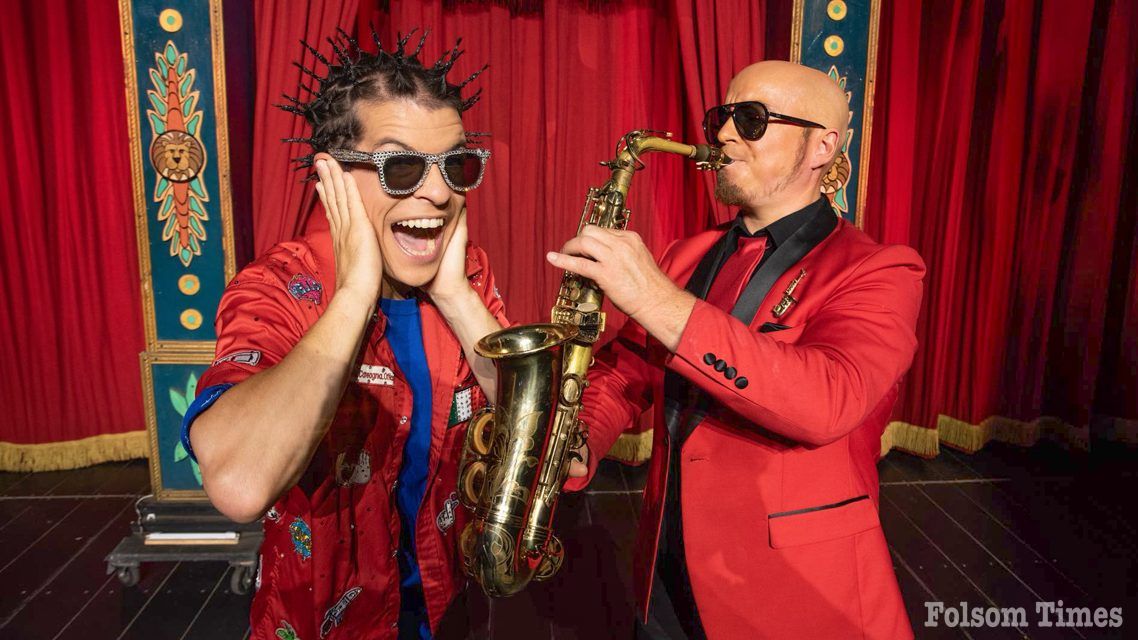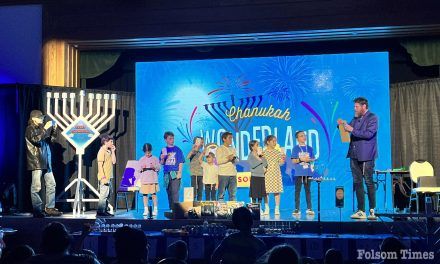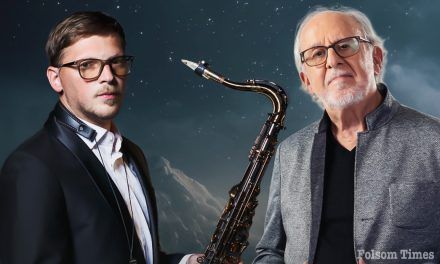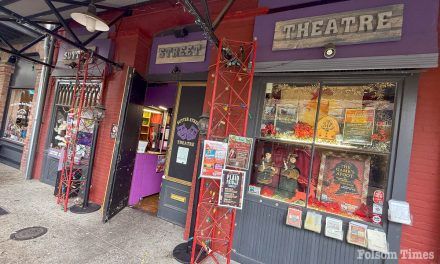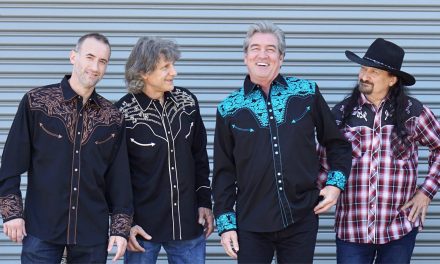Stevie and Jones Caveagna keep the big top alive with nonstop comedy, music, and family tradition at Circus Vargas
FOLSOM — After a night off, the big top at East Bidwell and Oak Avenue sprang back to life Wednesday as Circus Vargas resumed its Folsom run. While aerialists and acrobats soar and the ringmaster’s booming voice carried through the tent, it is often the duo of brothers Stevie and Jones Caveagna who keep the laughter rolling — modern day circus clowns whose energy, timing, and family legacy make them impossible to miss.
Anyone who has seen Circus Vargas knows Stevie Caveagna. He bursts onto the scene with his trademark “whoop whoop” chant, igniting the crowd with his boundless energy and playful antics. Loud, animated, and quick to pull the audience into his world of gags and stunts, Stevie is the engine of the duo. By his side is Jones, the comic straight man, reeling his brother in from his outrageous shenanigans with a perfectly timed look or understated reaction. It is quite apparent that his role is to ground the act, to give the audience someone to relate to as Stevie runs wild, and to set up punchlines that make the payoff twice as strong. Together, they embody a classic comedic rhythm that audiences recognize: the bold and brash clown met by the calm and collected partner, their interplay ensuring no moment under the tent feels still.
The Caveagna brothers are more than crowd-pleasers. They are the glue that holds the flow of the circus together. In a show filled with high-flying feats and elaborate setups, their job is to make sure the audience never notices the pause. As rigging is adjusted, as props are rolled in and out, as the stage is readied for the next daring spectacle, it is Stevie and Jones who step in to keep the energy alive. Their comedy isn’t filler; it’s a vital part of the nonstop rhythm that defines Circus Vargas.
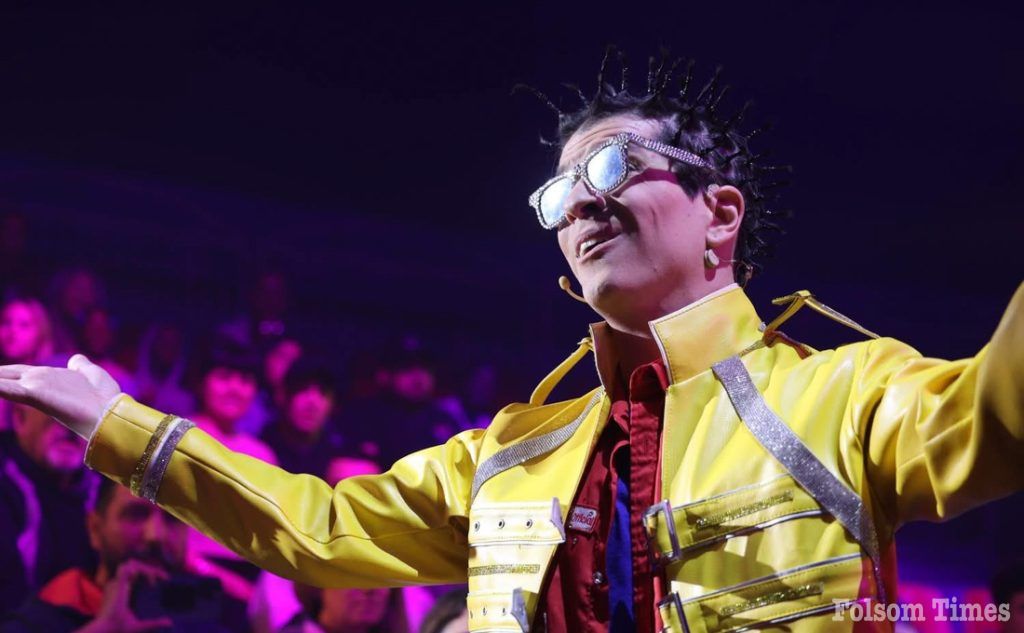
That sense of responsibility comes naturally. The brothers are the product of a five-generation Italian circus family. Their grandfather, Elicio, was a revered clown and musician in Italy who famously performed with Circo Nando Orfei. Their father, Artidoro, carried the tradition forward as a gifted musician on trumpet and saxophone, blending music with comedy in a way that defined the Trio Caveagna act. Stevie joined the act at just 10 years old, learning quickly that clowning was not simply about laughter — it was about timing, presence, and carrying the show from one act to the next.
Today, Stevie and Jones have built on that legacy with a style that is distinctly modern. Unlike the classic clowns with painted faces, red noses, and oversized shoes, they perform with a subtler, more contemporary look that connects with audiences who may be hesitant about traditional clown imagery.
“The days are changing. The way people approach clowns is different now,” Stevie explained in a past spotlight. “People are a little bit afraid of too much makeup and stuff. So, clowns are becoming a bit more modern — without the red nose, without the big blue shoes.”
For Stevie, that difference is about more than appearance — it’s about personality. “Especially for me, I always wanted to be a little bit different than the others. You need a special, unique look to stand out and represent the image you want. For me, I’m the crazy guy who comes in with a lot of energy, and I go, ‘Oh, oh!’ You know?”
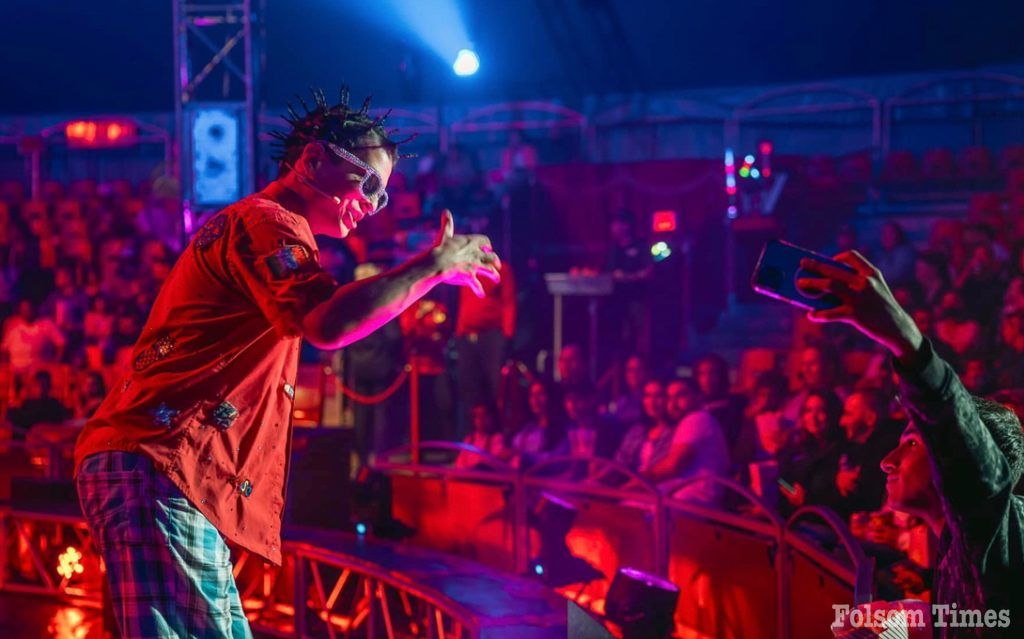
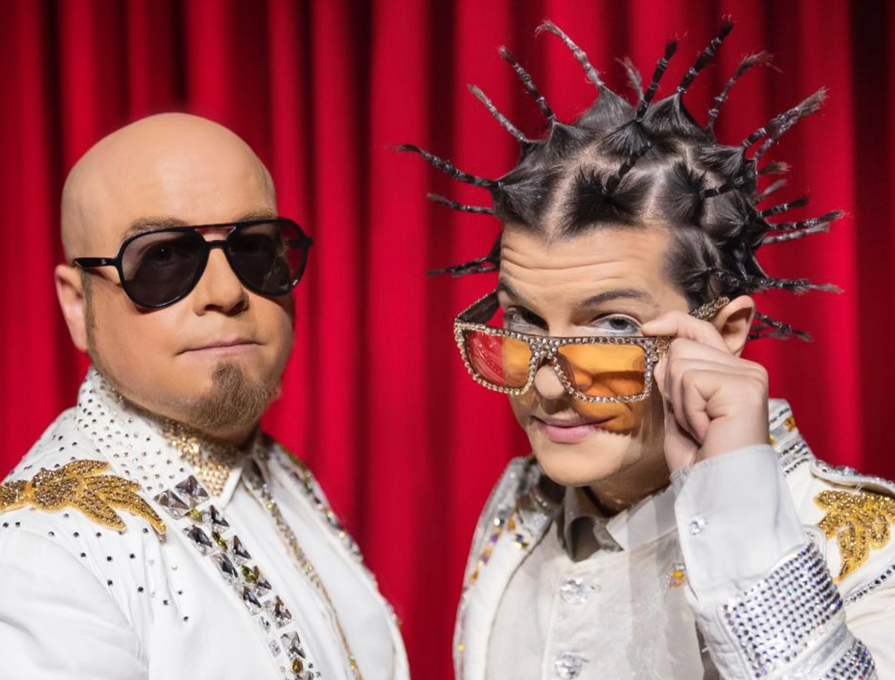
That approach has raised the stakes. “When you take away the red nose, the wig, the big shoes — everything is on you,” he said. “You have to be as funny and as crazy as possible, using your face, your body language, your ideas.” For Stevie and Jones, that means leaning on what they do best: physical comedy, musical mischief, and improvisation that keeps the crowd guessing.
Their routines range from slapstick comedy to musical mischief to jaw-dropping juggling feats. Stevie is a master of the diabolo, spinning and tossing the juggling prop with precision, sometimes working with three, four, or even five at once. In one particularly showstopping move, he juggles four diabolos behind his back, a stunt that draws gasps before the laughter resumes. Jones, meanwhile, knows just when to step in, adding subtle humor or serving as the foil that gives Stevie’s antics their spark.
Music remains central to their performances, a tradition handed down from their father and grandfather. Brass instruments become props, melodies get interrupted by jokes, and the rhythm of a song transforms into the rhythm of a gag. Their hip-hop clown routine, paparazzi chase act, and endless audience participation tricks keep the tent buzzing with energy from one spectacle to the next.
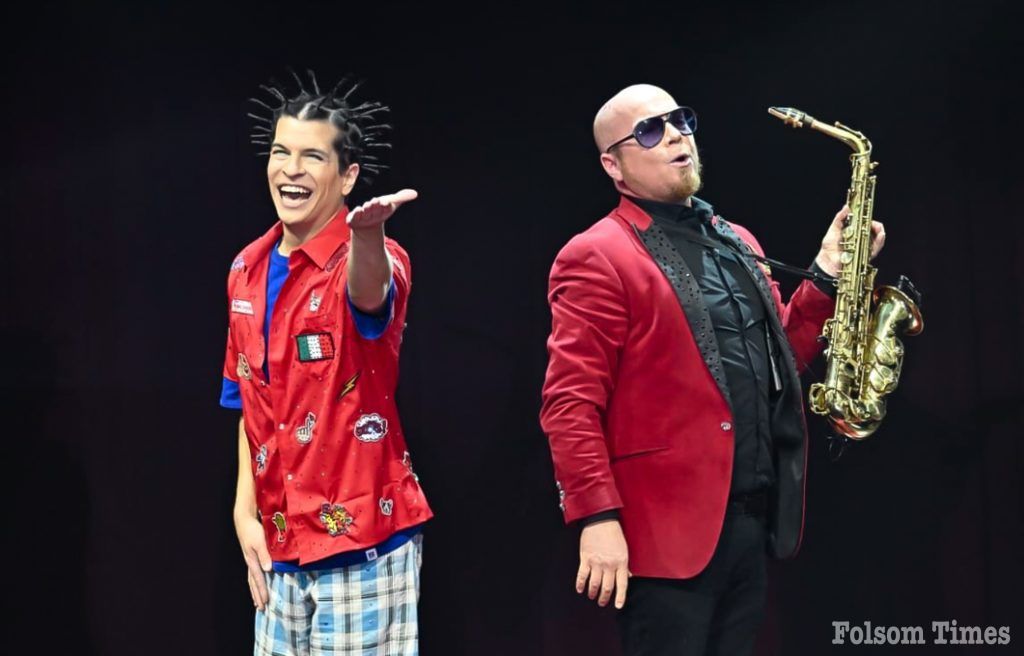
For Folsom audiences, Stevie and Jones represent everything timeless about the circus while also showing how clowning has evolved for the modern age. Their work is not just about laughter; it’s about connection, keeping the show alive in every moment, and ensuring that families walk away remembering not only the daring trapeze acts but also the joy of two brothers who truly live up to their title as Italian Ambassadors of Laughter.
Just two weeks ago, both Stevie and Jones made an early trip to Folsom after being contacted by Megan Frick of the Folsom Historic District Association, who invited them to Ciao Folsom, an Italian Sister City Celebration. The duo happily made the trip along with others from Circus Vargas. It was then they spent some times with Folsom Times and talked about the community’s love for the circus.
“We love Folsom, we truly love it here,” Stevie said. “We perform many places and we see a difference between the audiences in the daytime and the nighttime, but not in Folsom. Here in Folsom every show the crowd is so excited and engaged. We love coming here.”
Circus Vargas itself has a long and storied history. Clifford E. Vargas (1924–1989) founded the circus in 1969, inspired by his childhood fascination with the glamour and thrills of the big top. Growing up on a farm near Livermore, the son of Portuguese immigrants, Vargas never missed the traveling circuses that came to town. After working as a ticket seller, doorman, and later ringmaster in Chicago, he saved enough to buy into the Miller-Johnson Circus in 1972. What began as a modest operation grew rapidly, eventually boasting the largest circus tent in the world—the size of a football field—which took thirty men seven hours to raise.
Following Vargas’s death in 1989, management passed to longtime colleagues Jack Bailey and Joseph Muscarello, then later to Roland Kaiser. Rising costs eventually pushed Circus Vargas into a new format, a more intimate European-style one-ring circus. In 2005, Katya Arata Quiroga and her husband Nelson Quiroga took over the production, continuing the tradition and reinventing it for a new era. By 2010, they officially discontinued all animal acts, cementing Circus Vargas as a people-powered spectacle of artistry and talent. Today, the Quiroga family still owns and operates the circus, with Katya and Nelson’s three daughters also performing in the show.
Circus Vargas continues its Folsom run through October 6 at East Bidwell and Oak Avenue, bringing two hours of daring acrobatics, music, comedy, and wonder under the big top. Tickets and showtimes can be found atcircusvargas.com. Pricing varies by seating location, giving guests the chance to tailor their experience under the big top. VIP Experience seating ranges from $85 to $75, Ringside Reserved seats are $70 to $60, Arena Front is $55 to $45, Arena Side is $45 to $35, and Back Arena seating is $35 to $25. Children under 2 are free if seated on a parent’s lap, while children ages 2 to 10 qualify for child pricing. Guests ages 11 and over require an adult ticket, and seniors 60 and older are eligible for discounted senior pricing.
Copyright © 2025, Folsom Times, a digital product of All Town Media LLC. All rights reserved. No portion of this publication may be reproduced, distributed, or transmitted in any form or by any means, without the prior written permission of the publisher.
